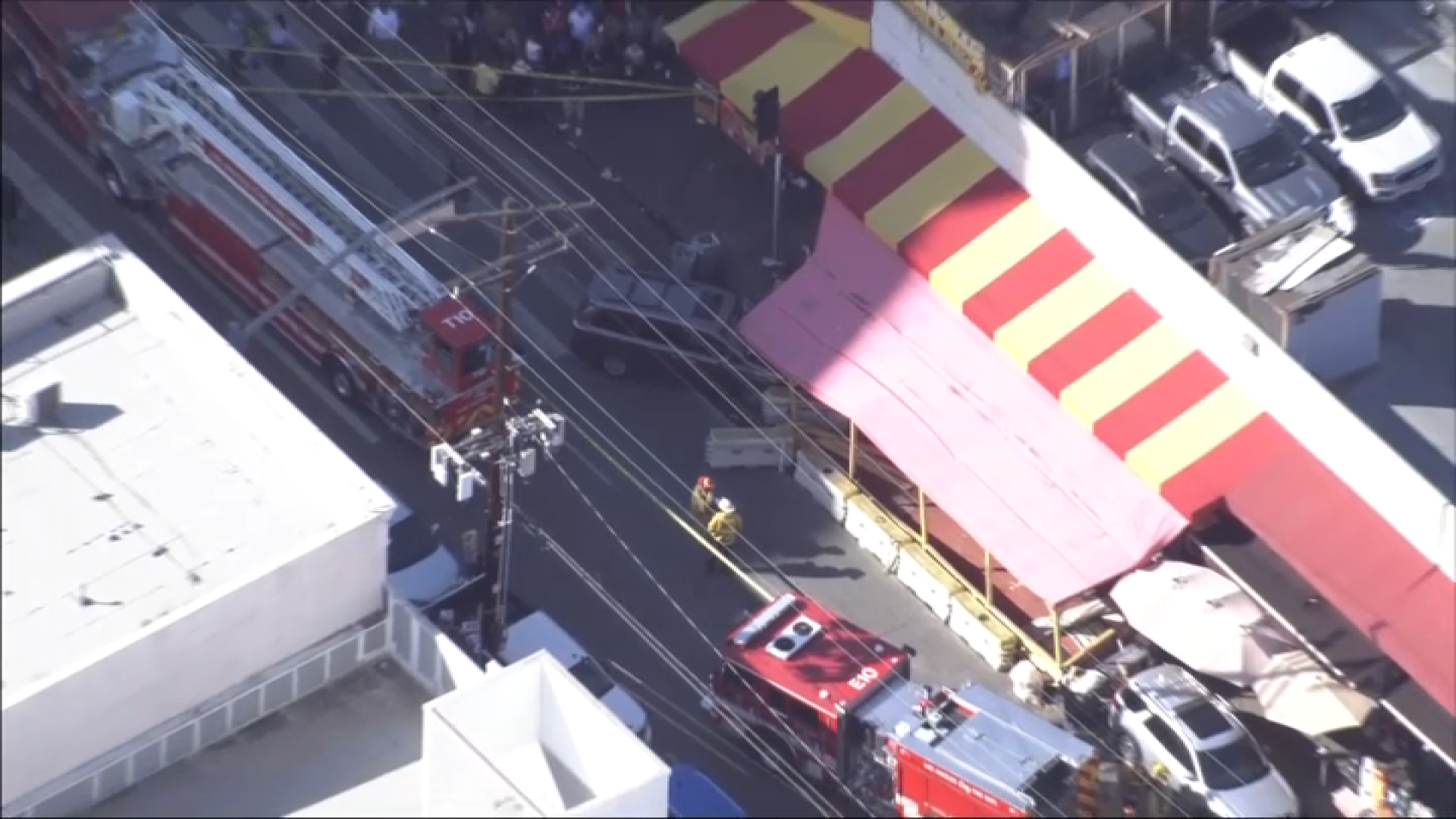Seeing it in action, you might be inclined to describe it as the Godzilla of Robocops.
LAPD, being prone to acronyms, prefers "Batcat," as in "Bomb Assault Tactical Control Assessment Tool," though calling this 20- ton robotic behemoth a tool is akin to calling a Bengal Tiger a kitty.
Whatever you call it, a year since Los Angeles Police took delivery utterly free of fanfare, the cat is now out of the bag. That happened Monday when Batcat was pressed into duty during the Sylmar barricaded gunman siege. Not since then-Chief Daryl Gates rolled out a mechanized battering ram 26 years ago had Los Angeles been so jolted by the power of a new police machine, tearing off outer walls and pulling out furniture not just on the ground floor, but upstairs as well.
From the perspective of the incident commander, Deputy Chief Kirk Albanese, the decision was a no-brainer: Officer Steven Jenkins had already been critically wounded by gunfire from the house, and the gunman inside had continued to fire. Why expose more officers to live fire when Batcat could be deployed to open up the suspect's house via remote control? "It was the right decision," Albanese said Monday night.

"I think what you're seeing is the evolution of law enforcement," said LA City Councilman Dennis Zine, who personally has seen dramatic changes in the department since he was an LAPD rookie. Developing armored protection became a priority after the 1986 pipe bomb explosion that killed two LAPD bomb squad officers, Arleigh McCree and Ronald Ball, as they were attempting to defuse it.
A decade later, the 1997 rampage by two heavily armed and armored bank robbers in North Hollywood underscored the need for armored vehicles to transport officers under fire and facilitate rescues. LAPD SWAT now has several armored "BearCat" vehicles specially produced for law enforcement by the Massachusetts company Lenco.
Since the 9-11 terror attack, the federal government has helped fund new anti-terror technology for local enforcement. In recent years, LAPD's bomb squad has made use of small Andros robots developed by the defense contractor Northrop Grumman. In fact, an Andros robot scoured the Sylmar house until its camera located suspect Sergio Salazar, who was by then dead.
Local
Get Los Angeles's latest local news on crime, entertainment, weather, schools, cost of living and more. Here's your go-to source for today's LA news.
But all these mechanisms are dwarfed by BatCat.
It was designed to fill a Bomb Squad need for a powerful remote control machine to move vehicles out of the way and even reach inside a building for access to a potentially hazardous device,
according to LAPD Lt. Andy Neiman, who was on scene at the Sylmar barricade.
LAPD commissioned a Utah-based specialist in automated vehicles, Autonomous Solutions, Inc., to build it, based on a Caterpillar forklift called the Telehandler, and with a control interface from Northrop Grumman's Remotec subsidiary. Autonomous Solutions had previously completed several law enforcement robots based on heavy construction equipment, including robotic backhoes for Israeli police, but nothing the size of BatCat. "We've only built one, " said Chris Brown, Business Development Manager for Autonomous Solutions.
Long ago, President Dwight Eisenhower spoke of a growing "military industrial complex" creating new weapons for warfare and national defense. Now there is a law enforcement industrial complex developing new police technologies..
Los Angeles Police have delined to speculate how often they intend to use the Batcat.
"It depends on the situation," said councilman Zine, noting that SWAT has had years of success with its well-practiced entry procedures, using flashbang devices and other techniques to create distractions. Tear gas also is approved for use to partially disable a suspect and encourage him
to come out, though that did not work in the Sylmar situation. Zine said the circumstances Monday were exceptional, given the active shooter continuing to fire at officers, and Zine concurred with Deputy Chief Albanese that the use of the BatCat was warranted. But such situations are not common.
The original battering ram a quarter century ago ended up having a relatively brief career. Devised to break into fortified drug houses for which warrants had been obtained, it got off to a bad start when a search of its first target discovered a mother and two children, but only a trace amount of narcotics. In Langford vs. Gates, the ACLU won a court decision ordering LAPD to consider public safety in executing search warrants. Plaintiffs attorney Joan Howarth, now dean at the law school of Michigan State University, recalled in a phone conversation from East Lansing that it was a "lack of success" that led LAPD to abandon the battering ram.
In marked contrast, subsequent armored and robotic vehicles have established themselves in emergency responses police call "exigent" situations, such as in Sylmar. Will the Batcat do so as well?
"I don't know if it will become SOP," said Councilman Zine, using the acronym for standard operating procedure. "Because there will be a lot of houses destroyed if we do that."



